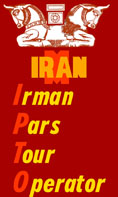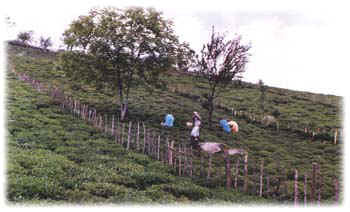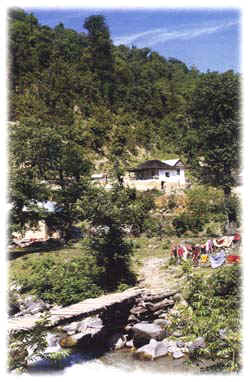
Gilan
 |
Gilan |
 |
The coastal plains of the
Caspian Sea, with more than 600 kilemeters length, mountainous slopes and
beautiful towns and villages, kind and hospitable people, are some of
important recreational regions of Iran. |
|
Summary: The regional plan for the development of Gilan and Mazandaran is one of the first structural plans covering the region which has been prepared to incorporate precise data about the present condition of these two provinces and outline the prospect for their development. Factors affecting population, economic potentials, tourist facilities, etc., as well as the unique geographic attributes of Gilan and Mazandaran are among the issues that have been duly examined in the study. Text: Structural urban planning in Iran
has a relatively long history but the plan for the Gilan and Mazandaran
region, prepared by the Center for Study and Research of Urban Development
and Architecture and introduced in this article in brief, is a new
undertaking, in terms of subject and content, and is a turning point for
regional structural planning in the country. Gilan and Mazandaran were selected for this study for two reasons:
Present Condition of the Region With an approximate area of 60,000 square kilometers, Gilan and
Mazandaran occupy 3.7 percent of the country. In 1986, the provinces had a
population of about 5.5 million, or 11 percent of the country's total
population. Bordering the Caspian Sea, the region has a singular beauty.
It has moderate weather and receives adequate rainfall. Its diverse
topography gives it a beautiful natural landscape. Its forests are the
only ones in the country that have been commercially explored. It holds 40
percent of Iran's pastures and 8.5 percent of agricultural lands. With the region's geographical diversity and abundance of
natural resources, unique patterns of population settlement and spheres of
business activity have resulted. Its vast economic possibilities served as
a magnet for people and the area has become quite congested with a density
of 90 persons per square kilometers, three times the national average. The
settled areas however, are scattered throughout the region although there
is a relatively lower average of urban settlement, about 27,000 persons
per town, which is half of the country average. The scattering of numerous
towns and villages expressly points to the region's special characteristic
(see charts 1 and 2). Another significant factor is that 70 percent of the
area in Gilan and Mazandaran is mountainous, hence the inhabited areas are
spread on the plains which comprise only one-third of the region. | |
|
The above-mentioned factors have also affected activities
in the tourism and industrial sectors. Industrial operations are likewise
concentrated on the plains, similar with tourist facilities. But while the
region is rich, there is a lack of a system to organize, control, and
direct the proper utilization of these resources. A case in point is the
development of tourist facilities. Townships and private villas were
hastily built along the coast between Ramsar and Babolsar in order to
accommodate more tourists that in 1989, there were about 70 half-completed
towns in the vicinity. |
 |
|
Policies and Suggestions Proposed by the Regional
Plan
The scenario presented above clearly shows that from the viewpoint of `environmental management', which, incidentally, is the main theme of the structural plan, the main problem that plagues Gilan and Mazandaran is how to organize its numerous and scattered townships. Protection of the natural environment and the development
of suitable conditions for implementation of activities are the objectives
of the plan, and concentration and centralization have been recommended as
solutions to the region's problems. The study has identified as
interrelated goals the protection of natural resources, agricultural
lands, historical and cultural heritage; the adoption of safety measures
against natural catastrophes; and adjustments in the patterns of
population settlement and activities. The plan outlines the following modes of action A. Urban Expansion:
The region is undeniably a tourist haven but so far, the development of tourism in this area has not been undertaken properly, hence, its potentials in this field have not been realized fully. The haphazard construction of tourist facilities and the unsystematic expansion of towns along the main tourist routes has had a very negative effect. Therefore, the preparation of a comprehensive plan with the cooperation of authorities and organizations under the auspices of the Ministry of Culture and Islamic Guidance has been considered as a definite necessity and the following points have been suggested to be included in the plan:
| |
Home > About Iran > Gilan
Copyright © 2008 Iranparstour.com. All rights reserved.